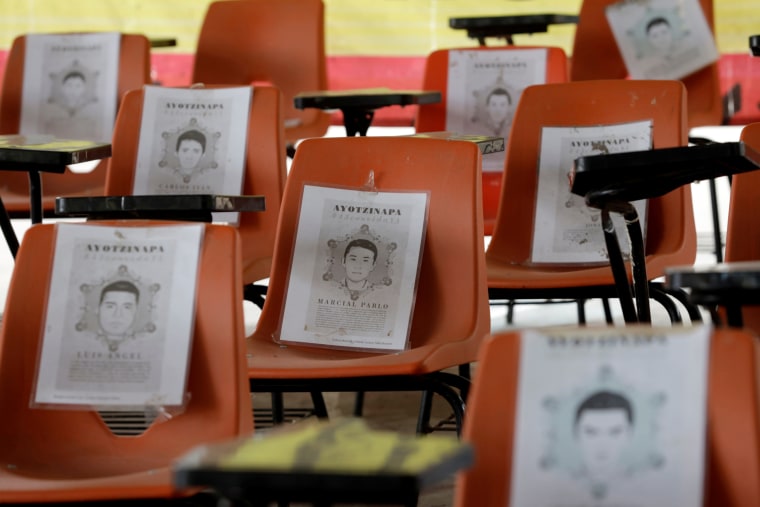MEXICO CITY - They are shocking and almost inconceivable numbers: more than 73,200 people of whom there is no trace.
It's approximately the equivalent of the entire population of American cities such as Deerfield Beach, Florida or Kalamazoo, Michigan.
In Mexico, it's the number of people who are missing, according to new official data. The value of this data is enormous, officials said.
"It is not just about having a registry, we not only want to know who we are looking for, but have all the possible information to carry out searches," said Karla Quintana, head of the National Search Commission, presenting the first public record of this data in Mexico.
The majority of disappearances have been reported since 2006 and 40 percent were recorded since December 2018, since the start of the administration of President Andrés Manuel López Obrador, who pledged to get answers around disappearances as those of 43 rural university students from Ayotzinapa, which has drawn international attention.
Fewer missing amid pandemic?
Alejandro Encinas, undersecretary of Human Rights, indicated that at least in the last months of the COVID-19 pandemic, the numbers have decreased compared to last year's levels.
"It means a significant decrease for the first time in crimes around the disappearances of people," Encinas said at a press conference. The drop is striking because other crimes such as homicides have continued to increase despite the confinement brought about by the coronavirus.
In addition to the 73,200 cases of people who have not yet been located, there are 100,000 people who were reported missing at some point and were later found, dead or alive.
The data from the National Search Commission shows the striking number of lives in limbo—people who have been unable to ever see again—or at bury—their loved ones as they grapple with the violence that has plagued Mexico.
A fifth of those registered as missing are minors, mostly between the ages of 10 and 19 years old.
In January, the registry had over 61,000 missing persons. In just a few months, more than 11,000 cases have been added to the database.
Several were cases reported directly by relatives of missing people on a new platform created to expedite the registry and the search of those who have disappeared. The new platform was created, according to the National Search Commission, to recognize that many families "do not report to the authorities, either out of fear or distrust."
There are also disappearances that are now being registered around previous events that took place in the country, including possible victims of the Mexican Dirty War marked by acts of government repression, such as the Tlatelolco and El Halconazo massacres , according to Undersecretary Encinas.
Registering missing persons has been a work in progress; a previous version of a registry was created in 2012, but it was updated infrequently and drew criticism from experts and associations due to the lack of key data. One of those expert groups, Data Cívica, even created its own data base to fill in the blanks, including giving names to the then more than 30,000 people who were known to be missing.
"There was no approved version," said Quintana. "Then all the available records had to be reviewed" to form the new official version with more and better information.
Despite attempts to standardize everything into a single database, the new registry has not been without problems, mainly due to the incomplete or wrong ways in which some prosecutors had registered previous data.
For example, some people were classified as missing, though it turned out to be Mexican women who had fled violent situations.
However, most cases do involve people who have disappeared—including children, adults, migrants and about one hundred Americans who haven't been found.
"It can surely be improved," said attorney Sofía de Robina, of the Centro Prodh advocacy group. "But recognizing that this is a crisis, that it continues and that there are thousands of missing faces—it's a good step.
Currently, many of the searches for missing persons are only being done by families. Some search the countryside, often inserting a post on the ground. If the post comes up with a rotten smell, they dig in that area, hoping to discover a mass grave that could contain the remains of their missing loved one.
In contrast to the latest Mexican numbers, it's estimated that about 40,000 disappeared during the Guatemalan Civil War and around 30,000 Argentines were victims of enforced disappearances during the country's Dirty War, according to calculations by non-governmental organizations.
This story was originally published in Noticias Telemundo.
Follow NBC Latino on Facebook, Twitter and Instagram.
